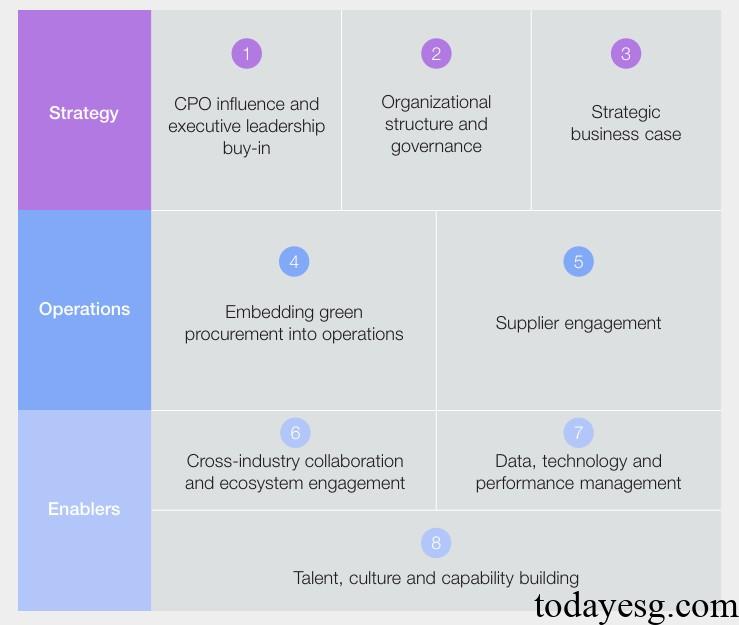Green Procurement Guidelines for Enterprises
The World Economic Forum (WEF) releases green procurement guidelines for enterprises, aimed at providing guidance for corporate green procurement.
The World Economic Forum believes that with the attention of stakeholders, green procurement is no longer just a cost driven function, but an important method reflecting the sustainable progress of enterprises.
Related Post: UNPRI Releases Supply Chain Sustainability Guidelines
Background of Enterprise Green Procurement Guidelines
Procurement is the core of a company’s environmental footprint, and the carbon emissions generated by procurement activities directly affect Scope 3 data. For industries such as transportation, food, and construction, Scope 3 carbon emissions account for over 90% of total emissions. Enterprise green procurement decisions can reduce supply chain risks, improve information transparency, and strengthen the connection between procurement departments and finance and sustainable development departments. Green procurement can also help companies rebuild more resilient supply relationships and promote innovation.
This guide is applicable to the Chief Procurement Officer and their team of enterprises, which can cover multiple departments, have sufficient understanding of products, demand, and supply, and maintain good relationships with supply chain enterprises. Enterprises implementing green procurement can incorporate sustainability into investment decisions, product design, and performance indicators, expanding positive environmental impacts.
Introduction to Enterprise Green Procurement Guidelines
The World Economic Forum has divided the Corporate Green Procurement Guidelines into the following sections:
- CPO influence and executive leadership buy-in: The Chief Procurement Officer and senior management work together to develop a green procurement strategy and link procurement performance to salary levels, publicly supporting green procurement and corporate innovation transformation.
- Organizational structure and governance: The procurement, operations, product, finance, and sustainable development departments work together to achieve green procurement goals, establish relevant governance mechanisms, and interact with senior management in a timely manner to incorporate green procurement into the daily operations of the enterprise.
- Strategic business case: Develop a green procurement business case that converts sustainability into commercial value and combines it with the company’s carbon reduction and net zero transformation to help senior management comprehensively evaluate sustainable development.
- Embedding green procurement into operations: Incorporate green procurement into procurement planning and contract management processes, considering supplier sustainability performance and ensuring the application of sustainable standards.
- Supplier engagement: Review suppliers, jointly develop green procurement roadmaps, develop low-carbon or circular solutions, and promote suppliers to provide green products and services.
- Cross-industry collaboration and ecosystem engagement: Using green procurement as an industry practice, promoting industry green transformation through joint procurement.
- Data, technology, and performance management: Establish a procurement data platform, develop key performance indicators that align with the company’s sustainable development goals, and establish tracking, forecasting, and disclosure systems.
- Talent, culture and capability building: providing sustainable training for procurement department personnel and incorporating sustainable standards into recruitment and evaluation.

Reference:
Green Procurement Playbook: The CPO’s Guide to Delivering Value for Business and Planet
ESG Advertisements Contact:todayesg@gmail.com








